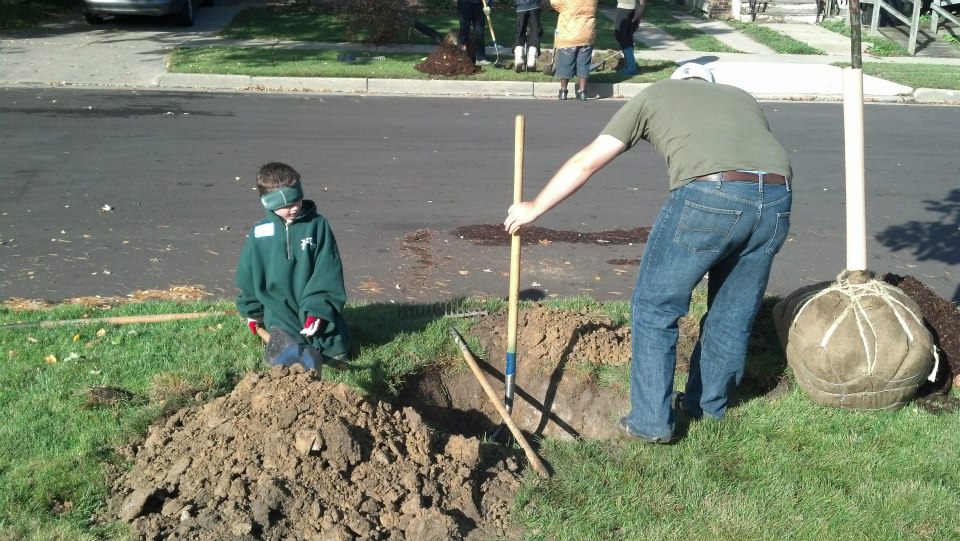Proper preparation of the planting site is critical to good root development. In urban areas, site preparation may require special planning because of the type of planting site, such as street or parking lot plantings. Also, when preparing the site, you may find surprises when digging, such as construction bury pits, old road beds, or asphalt. These surprises can increase the time and resources needed for planting.
Three steps for preparing the site are:
- Determine size of planting area
- Remove competing vegetation
- Prepare the soil
Determine size of planting area
Because most root growth occurs in the upper 12 inches of soil, the planting area needs to be shallow and wide to accommodate the development of the fibrous roots. Three measurements to consider when determining the size of the planting area are:
- Width — The planting area should be 3 to 5 times as wide as the roots or rootball.
- Depth — The planting area should be shallow enough to allow for the topmost root to be 1 to 3 inches above the soil surface (Gilman 2007). Planting a tree too deep is a common mistake that limits the soil oxygen available for root respiration. This can cause several problems, including death of the tree.
- Volume — There needs to be enough loosened soil in the planting area for adequate root growth. Often, the planting area is too small and there is not enough space to provide the needed loose soil. The soil volume needed for healthy root growth and support of a tree depends on tree species, size at maturity, expected lifespan, and environmental stress factors.
 |
|
Check planting depth depth to ensure trees are not planted too deep. Photo credit: Michigan State University Horticulture Club |
Competition control
Many planting sites have weeds, grass, groundcovers, or other competing vegetation that should be removed. There are several ways to eliminate competing vegetation. The best method depends on the location and requirements of the site and the resources available.
- Herbicides — It is important to apply herbicides according to the manufacturer’s directions. In some situations, a license is required to apply certain types of herbicide.
- Multiple tilling — Multiple tilling can help control weeds and vegetation. One option is to till once or twice during the summer and fall and once again before planting. If heavy equipment is used, steps need to taken to prevent soil compaction, especially if the soil is wet. The critical root zones of nearby trees also need to be protected by not tilling too deep and too near.
- Plastic sheeting — A sheet of dark plastic staked over the planting area for 2 to 3 weeks during the growing season kills grass and weeds. The plastic should be opaque so light cannot penetrate it. Remove the sheet before planting the tree.
- Hand weeding — Hand weeding is labor- and time-intensive, making it practical only for small planting areas.
- Stripping the sod — Sometimes it is necessary to remove sod from the planting site. Some topsoil will be removed in doing this, so it may be necessary to bring in additional topsoil or compost.
Prepare the soil
The soil conditions at the planting site greatly influence a tree’s ability to survive the planting process and its mature health and form. Problems with soil condition should have been identified during site selection and corrected before planting. However, this is not always possible.
If planting must proceed without adequate site preparation, the soil in the planting area needs to be thoroughly loosened to encourage root growth. However, to reduce the settling of the soil after planting, do not disturb the bottom of the planting area. If this soil is disturbed, it should be pressed down to decrease settling. Roughen the sides of the planting area to help the roots penetrate glazed soil surfaces.
See other parts of this 3 part Tree Planting Series:
To learn this content and more for volunteer credit and a certificate of completion, go to campus.extension.org and enroll in eLearn Urban Forestry.
By: Ed Macie, Regional Urban Forester, USFS Southern Region
